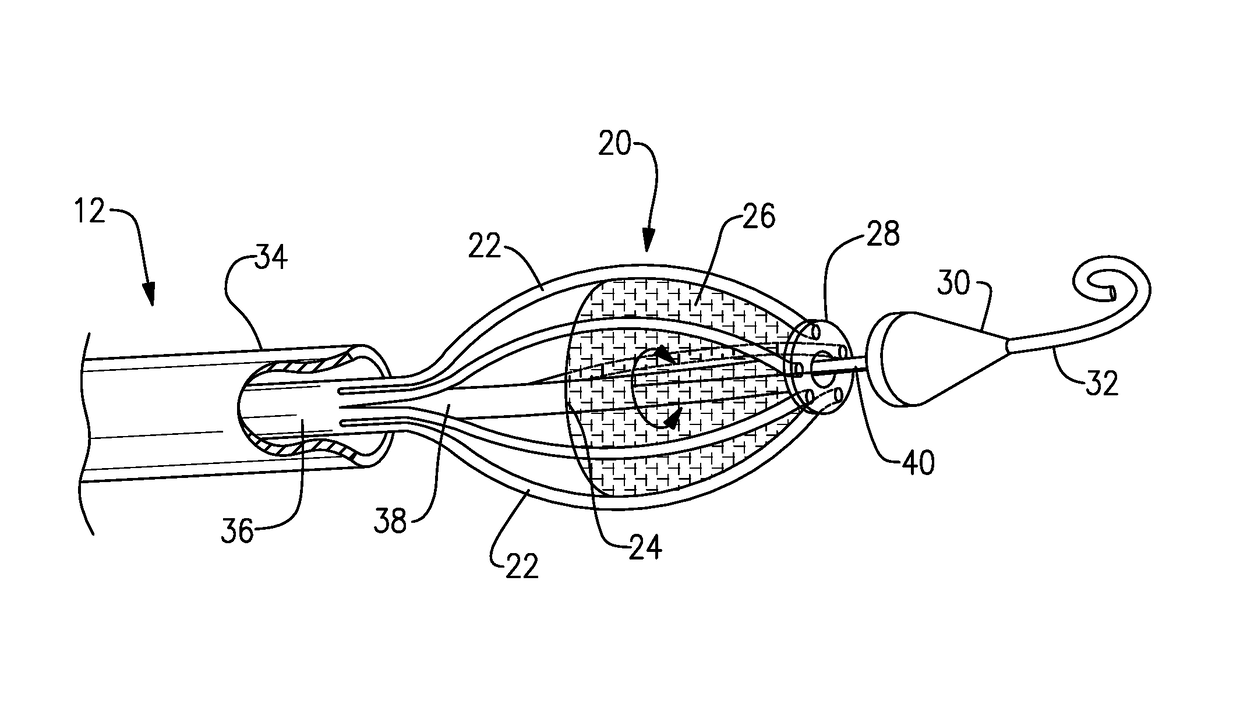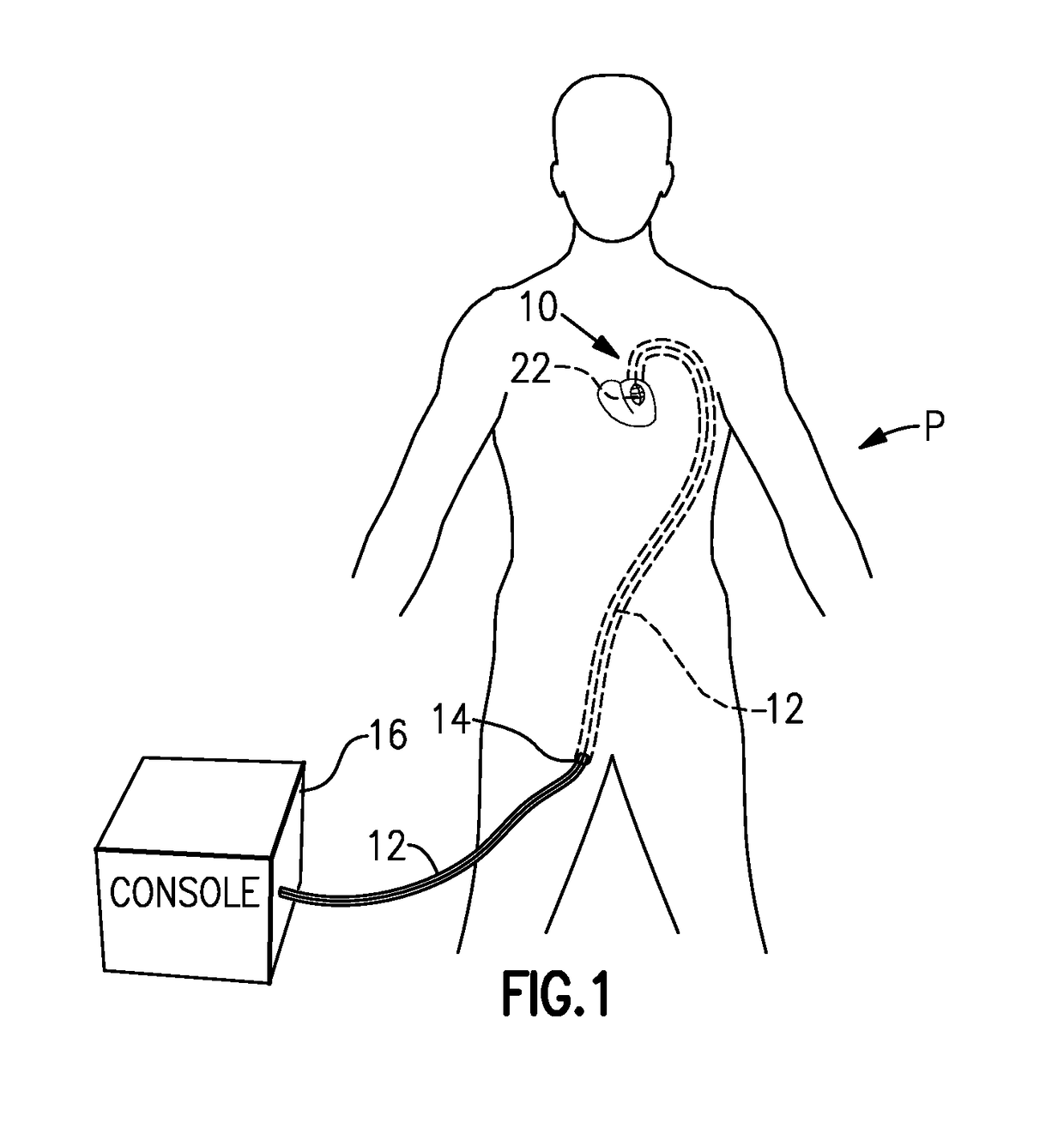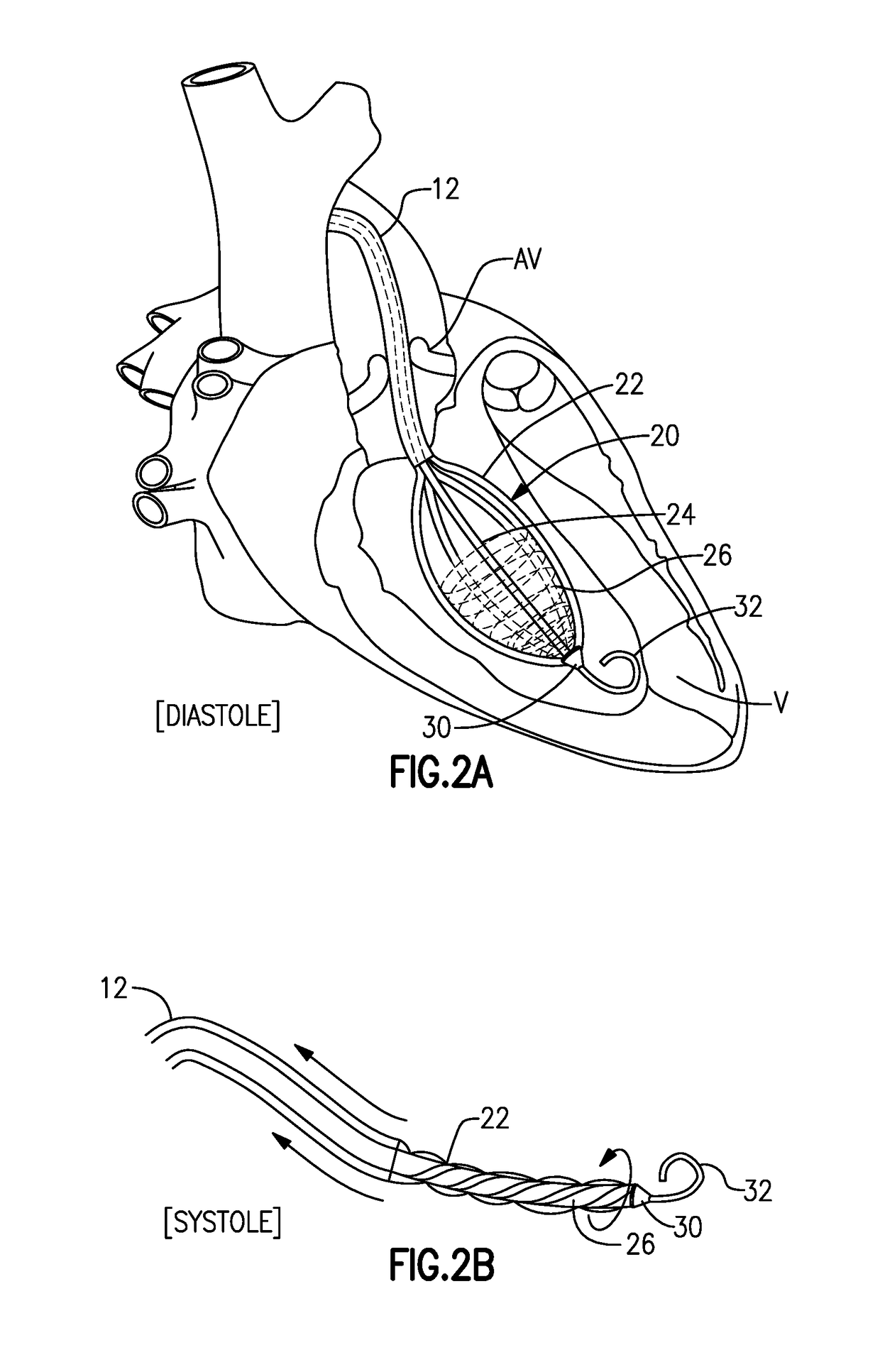Left ventricle heart-assist device
a heart-assist device and left ventricle technology, applied in the direction of heart stimulators, prostheses, diagnostic recording/measuring, etc., can solve the problems of weak heart pumping, risk of injecting gas bubbles directly into the aortic blood, and affect the ability of the heart to pump a normal volume of blood, etc., to achieve enhanced cardiac output.
- Summary
- Abstract
- Description
- Claims
- Application Information
AI Technical Summary
Benefits of technology
Problems solved by technology
Method used
Image
Examples
Embodiment Construction
[0027]With reference to the Drawing Figures, FIG. 1 illustrates a cardiac patient P in a supine position with a left-ventricle assist device or LVAD 10 inserted into the left ventricle V of the patient's heart. A catheter is inserted via a portal 14 into the patient P's femoral artery, then proceeding up to the patient's aorta and through the aortic valve AV into the chamber of the ventricle. The portal is shown here at the patient's crotch area near the pelvic area. The proximal or outer end of the catheter 12 is connected to an external console 16 which senses the patient's heart rhythm and applies mechanical forces to internal shafts or cannulae within the catheter to control the pumping action of the LVAD 10. In this example, there are conductive pads 18 affixed onto the patient's chest with wires to connect to the console, so that EKG signals are sensed by the console to obtain timing of compression and relaxation the patient's ventricle, i.e., systole and diastole. Alternative...
PUM
 Login to View More
Login to View More Abstract
Description
Claims
Application Information
 Login to View More
Login to View More - R&D
- Intellectual Property
- Life Sciences
- Materials
- Tech Scout
- Unparalleled Data Quality
- Higher Quality Content
- 60% Fewer Hallucinations
Browse by: Latest US Patents, China's latest patents, Technical Efficacy Thesaurus, Application Domain, Technology Topic, Popular Technical Reports.
© 2025 PatSnap. All rights reserved.Legal|Privacy policy|Modern Slavery Act Transparency Statement|Sitemap|About US| Contact US: help@patsnap.com



